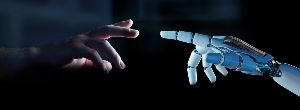Problem-Based Learning: A Fresh Approach to Personalized Education
October 08, 2025Categories: Education Strategies, Podcast Episode

AI Personalized Learning: A New Era in Education with Brooklyn Sinclair
Discover how AI is revolutionizing education by transforming traditional learning environments into personalized learning experiences. Join us as we explore the impact of personal learning environments and AI personalized learning on students and educators alike. Learn about innovative tools and strategies that are shaping the future of personalized education and empowering learners to achieve their full potential. This podcast is your guide to understanding the new age of AI in education and how it can benefit you.
Why Problem-Based Learning is a Game Changer for Education
Hey, I wanted to share something pretty exciting in the world of education that I've been thinking about lately—it's called problem-based learning, or PBL for short. If you haven't heard of it, no worries. Imagine a classroom where students aren’t just memorizing facts or listening passively, but actually rolling up their sleeves to solve real-world problems. That’s basically what problem-based learning is all about.
So, why is this a big deal? Well, traditional education often feels like it’s about regurgitating info. You learn the theory, then take a test, then move on. But with PBL, instead of just learning about a subject, students actively work on a problem that requires using the knowledge they've gained and also thinking critically. It changes the entire role of the student from a passive receiver to an active learner, which honestly makes learning way more engaging and effective.
Here's where it gets interesting for teachers too. PBL isn’t just throwing a tricky question at students; it’s about crafting meaningful, often complex problems that connect to real life, which can then help students build skills like collaboration, research, and communication. It mimics the sort of challenges they'll face outside of school, making education much more relevant.
One of the things I've noticed is how problem-based learning fits wonderfully with the idea of a personal learning environment. Think about it—each student brings their own experiences, interests, and ways of understanding to the table. PBL allows students to explore problem-solving through their own unique lens. So, while the problem might be the same, the paths to solving it can look very different for different students. This kind of flexibility is what makes learning feel personal and meaningful, rather than one-size-fits-all.
Now, you might be wondering how technology fits into this picture. With the rise of AI in education, there are even more tools to support personalized education through problem-based learning. AI can help tailor resources and guidance to each learner’s strengths and needs while still centering the student’s active problem-solving process. When AI teams up with methods like PBL, it’s like giving students a personal coach that helps them navigate challenges, find resources, and stay motivated.
So, how do you actually implement problem-based learning? As someone who’s worked in education, I’d say it usually starts with a few key steps:
- Choose a meaningful problem: This should be open-ended enough to spark curiosity but have enough structure to guide research and inquiry.
- Define clear goals: What skills, knowledge, or concepts are students expected to build by solving the problem?
- Set up resources and support: Whether it’s books, websites, expert interviews, or, yes, AI tools—students need access to diverse materials.
- Encourage collaboration: PBL thrives when students work in teams, sharing ideas and debating possible solutions.
- Guide reflection and feedback: It’s essential to take time after working the problem to reflect on what was learned and how the process went.
Honestly, it doesn’t have to be complicated. Even in a casual setting, like after-school clubs or during homeschooling, problems like “How can we reduce waste at school?” or “Design a new playground for kids with disabilities” can spark amazing conversations and learning.
Another exciting approach I've seen lately is combining problem-based learning with platforms that support AI personalized learning. One example I came across is Pooks.ai. It allows educators and learners to create customized learning materials that can align with the problem-solving journey students are on. If you’re curious, you can Create Your Personalized Book Now - For Free! It’s a great way to bring personalized education into action and help learners stay curious and engaged.
At the end of the day, problem-based learning isn’t just a trendy buzzword—it breathes life into education. It invites students to explore, create, and collaborate, paving the way for a learning experience that sticks and prepares them for real life. Whether you’re a parent, teacher, or just someone interested in how education is evolving, I think you’ll find it’s a pretty refreshing way to think about learning.
Thanks for hanging out with me to chat about this. Give PBL a shot if you get the chance, and don’t hesitate to check out platforms like Pooks to make education personalized and even more exciting!
 |
Transform Your Reading Experience with Pooks.ai!
|
Post Tags: